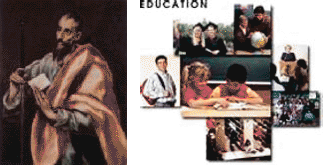Christ in the Works of Two Jewish Artists: When Art is Interreligious Dialogue
DOI:
https://doi.org/10.6017/scjr.v4i1.1515Keywords:
S. Ansky, Chagall, Christ, Christ in Majesty (Epstein), Consummatum Est (Epstein), Dedicated to Christ (Chagall), di tseylem frage, Ecce Homo (Epstein), Jacob Epstein, Golgotha (Chagall), interreligious dialogue, Jewish artists, Jewish-Christian dialogue, "Jewish Jesus", Jewish Modernism, Llandaff Christ (Epstein), Madonna and Child (Epstein, Convent of the Holy Child, London), Nostra Aetate, Haskalah, shtetl, St. Michael and the Devil (Epstein), The Commission for Religious Relations with the Jews, the Crucifix question, The Martyr (Chagall), The Risen Christ (Epstein), White Crucifixion, Yellow Crucifixion, Yiddish modernism, Chaim ZhitlovskyAbstract
Painter Marc Chagall and sculptor Jacob Epstein, both of whom were from orthodox Jewish backgrounds, each created a number of works of Christ. Although in Epstein's case, and only later in his career, some of these works were commissioned, both Chagall's and Epstein's works of Christ were self-driven. Chagall described himself as having been "haunted" by the face of Christ in his early years and his several crucifixion paintings were of a Jesus who was not the Christ of Christian dogma, but a "Jewish Jesus" who summed up the suffering of the Jewish people. Epstein similarly created a Christ that was beyond the conventions of the time, through his predilection for using primitive forms in his work. During his life-time, many of Epstein's Christs were met with resistance, but the more visionary critics understood the importance of his work in freeing the image of Christ from the matrix of convention and opening new possibilities of theological perception and understanding.
The work of both Chagall and Epstein, who were contemporaries, is examined in relation to Jewish modernism, a movement ongoing in their formative years and before, in which Jewish intellectuals, writers and artists were engaged in efforts to work-out the relationship of Judaism to Jesus and the surrounding Christian world. The atrocities of the Holocaust effectively ended this dialogue. The potential contributions of the thought and creative works of this pre-World War II interreligious interchange to contemporary Jewish-Christian dialogue are discussed.
Downloads
Published
How to Cite
Issue
Section
License
Copyright (c) 2015 Studies in Christian-Jewish Relations

This work is licensed under a Creative Commons Attribution 4.0 International License.
Please navigate to the Copyright Notice page for more information.

